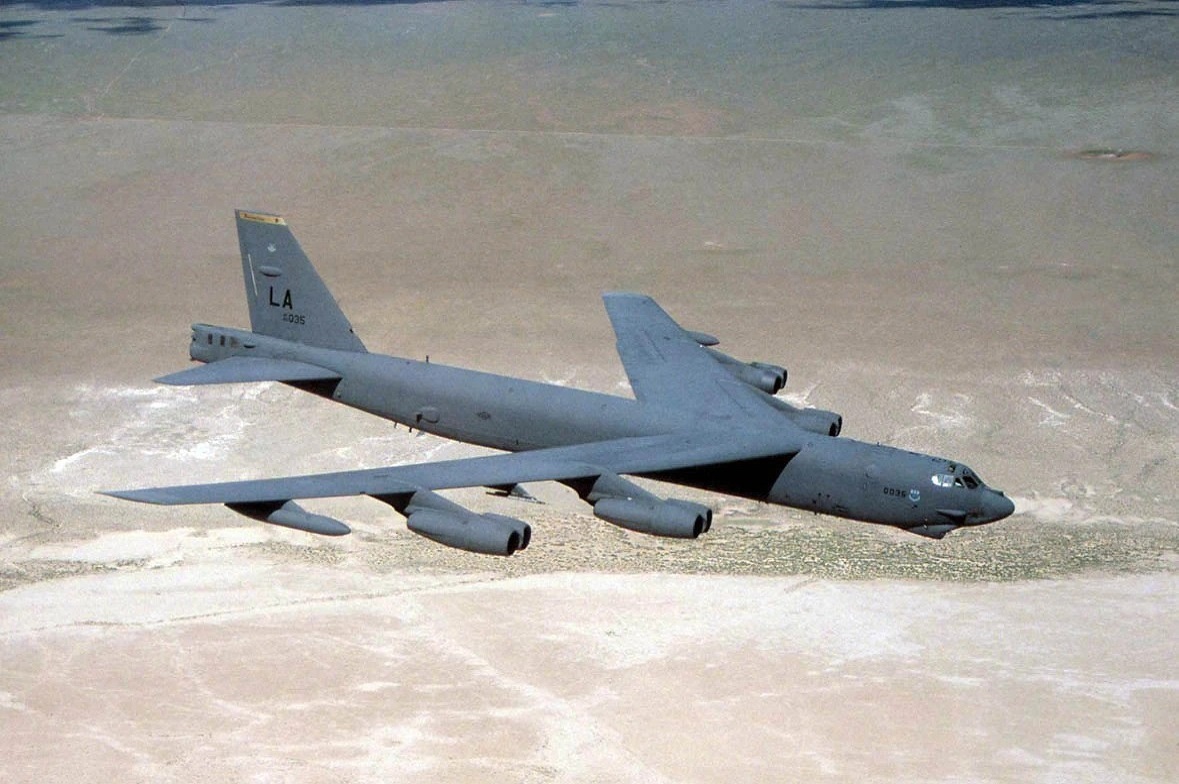Vulnerabilities of American B-52 Fighters
TEHRAN (Defapress) - In a world where geopolitical tensions and military competitions are constantly evolving, the defense capabilities of countries play a decisive role in maintaining independence and national security.

Reports about the replacement of B-2 bombers with B-52s at U.S. bases in Diego Garcia Military Base have once again drawn attention to America’s military power projection in the Middle East.
U.S. officials state that strategic bombers are deployed to these bases to achieve America’s objectives in the region. However, a detailed examination of the features and weaknesses of this aging bomber provides a clear picture of the balance of power in the region.
The B-52 Stratofortress is a strategic, heavy bomber that has been in service with the U.S. Air Force since the 1950s. Designed with long wings and eight turbofan engines, this bomber is capable of long-range flights with an operational range exceeding 14,000 kilometers without aerial refueling.
It has a wingspan of 56.4 meters, a length of 48.5 meters, and can carry up to 31.5 tons of various munitions, including heavy bombs, cruise missiles, and nuclear weapons. With a takeoff weight exceeding 219.6 tons, it has an operational range of over 12,000 kilometers (without refueling) and can continue flying almost indefinitely with aerial refueling.
The B-52’s maximum speed is approximately 1,005 kilometers per hour (0.86 Mach), and its crew consists of five members, including a pilot, navigator, and electronic warfare specialist.
Comparison of B-52 with B-2 Spirit
Compared to the B-2 Spirit, which benefits from advanced stealth technology, the B-2’s low radar cross-section is one of its strengths. With its unique aerodynamic design and radar-absorbing materials, the B-2 is built for penetrating enemy airspace and conducting precise strikes, while the B-52’s primary mission is large-scale attacks from a safe distance.
The cost of building each B-2 is estimated at around $2 billion, whereas the B-52, due to its long service life, has lower maintenance costs. However, unlike the versatile and stealthy B-2, the B-52’s outdated design and electronic systems make it far more vulnerable in modern, high-threat environments.
Weaknesses of the B-52
The B-52’s weaknesses make it an easy target for air defense systems. Its primary weakness is its inability to evade radar detection. Additionally, its relatively low speed gives defense systems ample time to target it with surface-to-air missiles. In other words, the B-52 has been effective in proxy wars and asymmetric conflicts (e.g., large-scale bombings) but exhibits clear vulnerabilities against modern air defense systems.
Its lack of stealth and large fuselage make it easily detectable and trackable by advanced radars. It lacks a non-metallic or specialized insulating body, and despite the installation of a new AESA radar, its radar cross-section is not comparable to stealth aircraft. Electronic warfare systems can also disrupt the B-52’s satellite communications and navigation, reducing the accuracy of its attacks or completely preventing it from completing its mission.
Next, considering the strengths and weaknesses of the B-52 bomber, we examine Iran’s air defense systems against this aging American iron giant:
Bavar-373 Air Defense System
This is a strategic, long-range, road-mobile system that Iran considers equivalent to the Russian S-300. Its upgraded version (Bavar-373-II), equipped with more advanced radars and missile systems, has a target detection range exceeding 320 kilometers and an engagement range for its missiles (Simorgh or Sayyad-4B) of up to 300 kilometers. The system can track dozens of targets and simultaneously guide multiple missiles toward long-range targets, fully covering the B-52’s operational range.
3rd Khordad System
A medium-to-long-range system capable of detecting 100 targets per radar band, tracking four targets simultaneously, and firing two missiles at each target. Its missiles (Taer-2) have a range of 50–200 kilometers and an operational ceiling of 30 kilometers. The system’s effectiveness in real combat was proven by the downing of a U.S. RQ-4 drone, demonstrating its ability to counter advanced threats.
15th Khordad System
This medium-range air defense system can detect targets up to 150 kilometers and destroy them with Sayyad-3 missiles at up to 200 kilometers. It can also detect stealth targets at a range of 85 kilometers and engage multiple targets simultaneously, making it suitable for countering diverse threats, including the B-52.
Electronic Warfare Systems
Iran has developed ground-based and vehicle-mounted electronic warfare systems such as “Fajr” and “Nasr,” capable of disrupting enemy radars, communications, and satellite navigation. U.S. military reports have confirmed that their drones and aircraft in the Persian Gulf have been affected by these disruptions. The combination of electronic warfare with multilayered missile systems enhances Iran’s capability to counter long-range threats like the B-52.
Anti-Aircraft Artillery and Fighter Jets
Although the B-52 primarily operates at high altitudes, Iran’s anti-aircraft artillery can pose a threat to low-flying aircraft. Additionally, fighter jets such as the F-14, MiG-29, and Su-24 can easily intercept the B-52 in the absence of air escorts.
The B-52 bomber, despite its age and ability to carry heavy munitions, is vulnerable to modern air defense technologies. Its lack of stealth, low speed, and easily detectable fuselage make it an easy target for Iran’s advanced defense systems.
Systems like Bavar-373, 3rd Khordad, and 15th Khordad, capable of detecting and destroying targets at long ranges, form a formidable barrier against aerial threats. This capability is complemented by electronic warfare systems, agile fighter jets, and anti-aircraft artillery, leaving no opportunity for penetration of Iran’s airspace.
Today, relying on indigenous knowledge and unwavering determination, Iran stands tall not only against threats like the B-52 but also against any military challenge. Iran’s skies, under the shadow of these capabilities, remain secure and impenetrable.
